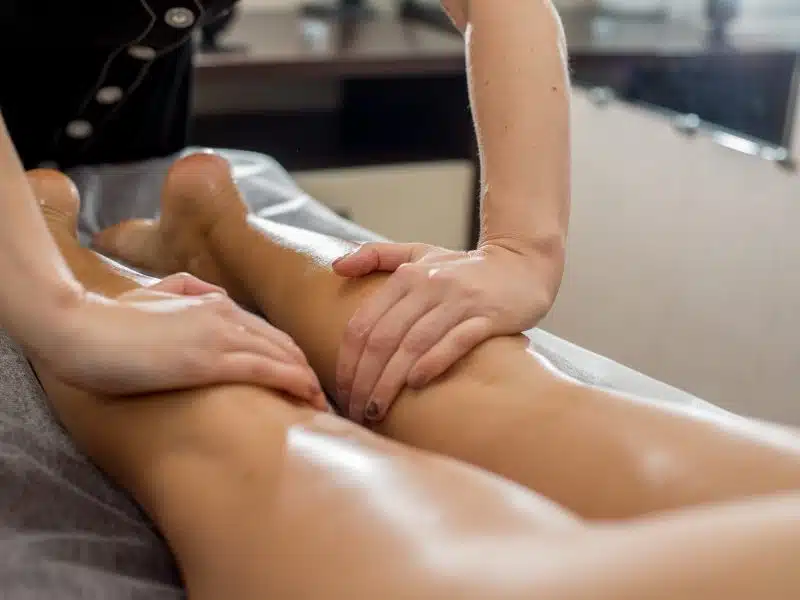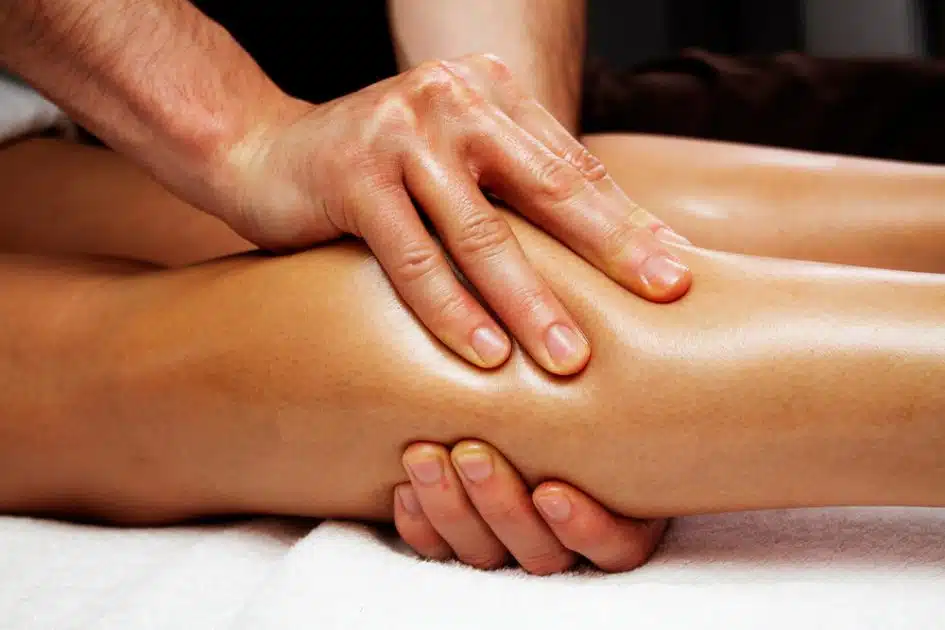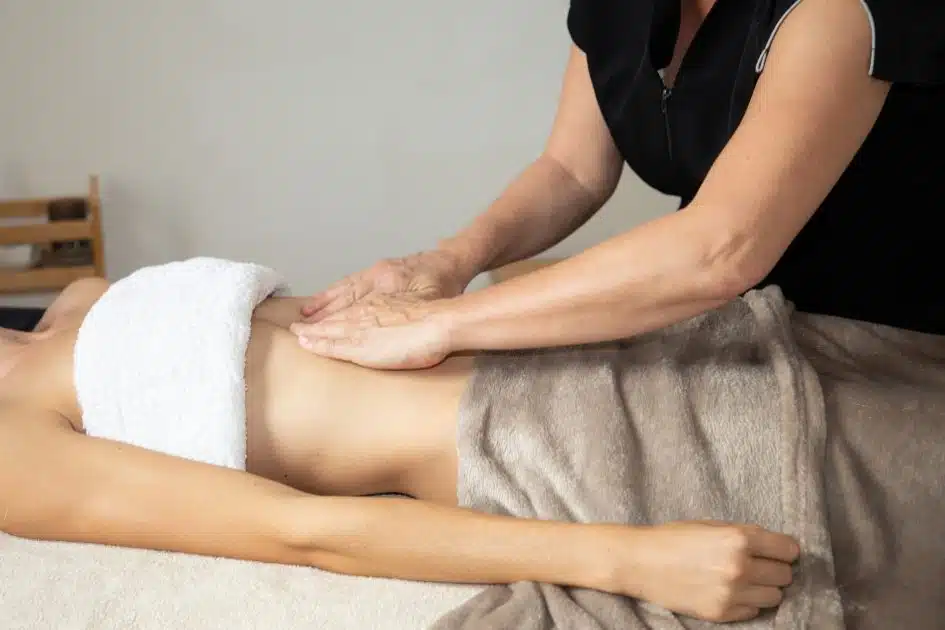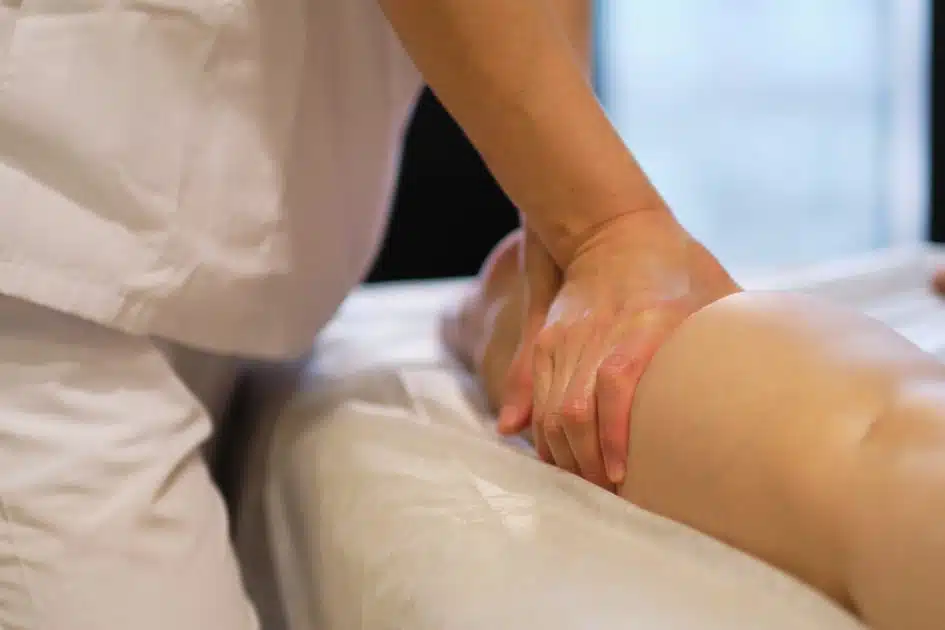Manual Ligament Therapy

Unlocking Healing Potential: Understanding Manual Ligament Therapy
What is Massage 09th Aug, 2023
Manual Ligament Therapy (MLT) emerges as a novel method in the domain of therapeutic bodywork, revolutionizing how we see and handle musculoskeletal disorders.

MLT, developed by Arik Gohl, a pioneering clinical therapist, disrupts established approaches by putting ligaments at the forefront of its therapeutic emphasis.
This section seeks to offer a quick introduction to MLT as well as throw light on its specific approach that distinguishes it from standard therapy.
Manual Ligament Therapy (MLT) Overview
Manual Ligament Therapy is a novel and specialized approach that differs from other massage therapies in that it targets the body’s ligaments. Ligaments, the strong, fibrous bands that link bones in our skeletal system, have long been underappreciated in the realm of bodywork, with muscles frequently taking center stage.
Arik Gohl’s seminal discovery on the significance of ligaments led to the development of Manual Ligament Therapy, which views these connective tissues as more than just structural components. Gohl’s method is based on the idea that ligaments behave as sensory organs, actively impacting pain perception and muscle function. This distinct viewpoint fueled MLT’s development into a very effective treatment method.
What is the distinction between Manual Lymphatic Drainage (MLD) and Manual Ligament Therapy (MLT)?
Manual Lymphatic Drainage (MLD)
MLD is a specialized massage technique that focuses on stimulating the lymphatic system to enhance lymph flow and promote the removal of waste products, toxins, and excess fluid from tissues. It is commonly used to manage conditions like lymphedema, post-surgery recovery, chronic pain, and sports injuries. MLD is gentle and non-invasive, involving rhythmic and light-touch movements to improve overall well-being and support the immune system.
Manual Ligament Therapy (MLT)
MLT is a manual therapy technique that targets specific ligaments in the body to address musculoskeletal issues and promote healing. It involves the application of precise pressure to ligamentous structures to reduce pain, improve joint function, and support tissue repair. MLT is commonly used in treating joint injuries, and chronic pain related to ligament dysfunction, and to enhance overall musculoskeletal health.
In conclusion, while both Manual Lymphatic Drainage and Manual Ligament Therapy are manual treatments, their focuses and applications differ. MLD focuses on the lymphatic system for lymph flow and cleansing, whereas MLT focuses on ligaments to address musculoskeletal disorders and promote healing.
Unique Approach of MLT Compared to Traditional Therapies
Manual Ligament Therapy turns the attention away from the frequently-ignored ligaments and onto the muscles, which are the primary focus of conventional massage therapy. This change in emphasis results from the conviction that ligaments are essential for preserving stable joints, appropriate joint alignment, and general musculoskeletal health.

Direct application of moderate, non-invasive strokes or pulses to certain ligamentous areas is the Manual Ligament Therapy approach. These precise manipulations are intended to activate the ligaments, setting off a series of beneficial reactions. The related muscles get signals to relax when the ligaments react, which results in less tension and more movement.
MLT stands out for its holistic approach to treating musculoskeletal problems. Manual Ligament Therapy provides a potent solution for pain treatment, injury rehabilitation, and general well-being by recognizing the importance of ligaments and incorporating them into the therapy.
Recommended:
Massage Therapy for Chronic Pain Management
Explanation of the Decision to Focus on Ligaments
The idea that ligaments are more than just basic bodily structures is at the heart of the Manual Ligament Therapy concept. Instead, they show themselves as sensitive and active parts that are the key to the body’s intrinsic ability to repair itself.
Even though they are tiny and undetectable, ligaments are crucial for maintaining the stability, movement, and integrity of joints. However, in conventional treatment techniques, their potential impact on muscle function and pain perception had frequently been disregarded.
Gohl aimed to create a more comprehensive strategy that might address the underlying causes of musculoskeletal problems by focusing his therapy on ligaments as the main target. MLT works to increase the body’s inherent capacity for healing itself by balancing the communication between ligaments and muscles.
Benefits of Manual Ligament Therapy
Manual Ligament Therapy is a specialized technique that focuses on stimulating the lymphatic system to promote lymph flow and enhance the body’s natural ability to heal and detoxify. Manual Ligament Therapy is applied through gentle and non-invasive massage techniques, making it a safe and effective option for various conditions.
Let’s explore its benefits, applications, safety, and its role in prevention and maintenance.
Benefits and Applications of Manual Ligament Therapy
1. Lymphedema Management
Manual Ligament Therapy is widely used in the treatment of lymphedema, a condition characterized by the accumulation of excess lymph fluid, often resulting from lymph node removal or damage due to cancer treatment.
2. Chronic Pain Relief
Manual Ligament Therapy can help alleviate chronic pain conditions by reducing inflammation and promoting tissue healing. It is commonly used in conditions like fibromyalgia, arthritis, and chronic fatigue syndrome.
3. Sports Injuries
Manual Ligament Therapy aids in the recovery from sports-related injuries by reducing swelling and promoting faster healing, helping athletes return to their activities sooner.
4. Post-Surgery Recovery
Manual Ligament Therapy can assist in post-operative healing by reducing post-surgical swelling and supporting the body’s natural healing processes.
5. Detoxification and Immune Support
By enhancing lymphatic circulation, Manual Ligament Therapy can aid in detoxifying the body, removing waste products, and boosting the immune system.
6. Stress Reduction and Relaxation
Manual Ligament Therapy’s gentle and soothing techniques can help reduce stress and promote relaxation, benefiting overall well-being.
Direct and Indirect Benefits of Manual Ligament Therapy
1. Pain Reduction
Manual Ligament Therapy can directly reduce pain by easing inflammation and indirectly improve pain management through relaxation, which helps lower stress-related pain.
2. Improved Lymph Flow
Manual Ligament Therapy directly stimulates the lymphatic system, enhancing lymph flow, which contributes to better fluid balance and waste removal in the body.
3. Enhanced Healing
Manual Ligament Therapy has positive effects on tissue repair and reduction of swelling and directly aid in the healing process after injuries or surgeries.
4. Immune Support
By promoting lymphatic circulation, Manual Ligament Therapy indirectly supports the immune system’s function, helping the body fight off infections and illnesses.
5. Relaxation and Well-being
The calming nature of Manual Ligament Therapy has direct psychological benefits, contributing to reduced stress and an improved sense of well-being.
Non-Invasive and Gentle Nature of Manual Ligament Therapy
Manual Ligament Therapy is a non-invasive and gentle therapy that involves rhythmic and light-touch massage techniques. It does not involve the use of any chemicals or invasive procedures, making it a safe option for individuals of all ages.
Safety of Manual Ligament Therapy
Since MLT does not involve any invasive techniques or medications, it is considered safe for most individuals. However, like any therapy, there may be some contraindications for certain medical conditions, so it’s essential to consult with a qualified MLT practitioner or a healthcare professional to determine its suitability for specific cases.
Prevention and Maintenance with Manual Ligament Therapy
In addition to treating existing conditions, Manual Ligament Therapy can be used as a preventive measure to maintain optimal lymphatic circulation, support immune function, and reduce the risk of fluid retention or swelling. Regular MLT sessions can also be beneficial for athletes to prevent sports injuries and improve recovery time between training or events.

MLT has several advantages and uses, including the treatment of chronic pain, the prevention of sports injuries, and the promotion of relaxation and cleansing. It may be used as a preventative strategy to enhance general health and well-being and is a safe alternative for a variety of people due to its gentleness and lack of invasiveness. To guarantee the greatest outcomes and safety, look for a skilled practitioner if you are thinking about MLT as a kind of therapy.
How Regular Manual Ligament Therapy Sessions Aid in Overall Wellness
Regular MLT sessions play a significant role in promoting overall wellness by enhancing the body’s lymphatic system and supporting its natural healing processes.
Here’s how MLT contributes to overall well-being:
Improved Lymphatic Circulation
MLT stimulates the lymphatic vessels, facilitating better lymph flow throughout the body. This helps in removing waste products, toxins, and excess fluid from tissues, leading to reduced swelling and a healthier internal environment.
Enhanced Immune Function
The lymphatic system is closely linked to the immune system. By promoting lymph flow, MLT indirectly supports immune function, helping the body defend against infections and illnesses more effectively.
Detoxification
MLT aids in detoxification by improving the elimination of metabolic waste and harmful substances from the body. This detoxifying effect contributes to better organ function and an overall sense of well-being.
Stress Reduction
The gentle and rhythmic techniques used in Manual Ligament Therapy induce relaxation and reduce stress levels. Lower stress has numerous benefits, including improved sleep, reduced muscle tension, and enhanced mental clarity.
Pain Management
Regular MLT sessions can help alleviate chronic pain conditions by reducing inflammation and improving tissue repair. This pain-relieving effect contributes to a better quality of life for individuals with chronic pain issues.
Improved Tissue Healing
Manual Ligament Therapy supports the body’s natural healing processes by enhancing circulation and nutrient delivery to injured tissues. This can expedite recovery from injuries and surgeries.
Enhanced Well-being
MLT promotes a sense of balance and well-being, contributing to an overall improvement in mood and emotional health.
Role of MLT in Injury Prevention and Muscle/Ligament Health
Injury Prevention
By maintaining optimal lymphatic circulation, Manual Ligament Therapy helps prevent the buildup of fluids and swelling in tissues, reducing the risk of overuse injuries and stress-related damage. Proper lymphatic drainage can also improve muscle flexibility and joint mobility, minimizing the risk of strains and sprains.
Faster Recovery
In the case of minor injuries or muscle soreness, MLT can speed up the recovery process by promoting tissue healing and reducing inflammation. This can help athletes and active individuals get back to their activities more quickly.
Muscle and Ligament Health
MLT can enhance the health of muscles and ligaments by improving blood flow and oxygen supply to these tissues. This not only supports their function during physical activities but also aids in the repair and regeneration of muscle fibers after workouts.
Reduced Muscle Tension
Regular MLT sessions can help alleviate muscle tension and stiffness, which are common causes of discomfort and reduced mobility. Relaxed muscles are less prone to injury and are better equipped to handle physical stress.
Regular MLT treatments improve lymphatic circulation, immunological function, stress management, pain management, and tissue repair, all of which contribute to general well-being.
MLT is also useful for injury prevention and maintaining optimal muscle and ligament health, making it a vital therapy for athletes and others looking to enhance their physical performance and general quality of life. MLT, as a mild and non-invasive treatment, offers a safe and effective choice for anyone wishing to improve their wellness and live a balanced and healthy lifestyle
Recommended:
How To Do Manual Lymphatic Drainage?
The Bottom Line
Manual Ligament Therapy (MLT) is a highly beneficial and versatile treatment that offers a myriad of advantages for individuals seeking improved health and well-being. Its gentle, non-invasive nature makes it a safe option for people of all ages and conditions. By stimulating the lymphatic system, MLT promotes better lymph flow, detoxification, and immune support, contributing to an overall sense of balance and wellness.
MLT’s direct and indirect benefits extend to various conditions, such as managing chronic pain, supporting post-surgery recovery, and aiding in the treatment of lymphedema and sports injuries. Moreover, its role in injury prevention and maintaining optimal muscle and ligament health makes it an invaluable tool for athletes and active individuals striving to stay injury-free and optimize their physical performance.
Through regular MLT sessions, individuals can experience reduced stress, improved tissue healing, and a better quality of life. MLT’s positive impact on physical and emotional well-being underscores its importance as a holistic therapy for overall health.
FAQs
What is a manual therapy technique?
A manual therapy technique involves hands-on treatment by a trained therapist to address musculoskeletal issues, promote healing, and improve overall well-being.
Does manual therapy really work?
Yes, manual therapy has shown to be effective in managing musculoskeletal conditions, reducing pain, and improving joint function when performed by skilled practitioners.
What are the side effects of manual therapy?
Manual therapy is generally safe, but some individuals may experience mild soreness or discomfort after treatment, which typically resolves quickly.
What massage does Manual Ligament Therapy compare?
Manual Ligament Therapy is a distinct technique and is not directly comparable to traditional massage modalities. It focuses on treating specific ligaments to address joint and tissue issues.
How many interval sessions have Manual Ligament Therapy?
The number of Manual Ligament Therapy sessions needed depends on the individual’s condition and response to treatment. Typically, several sessions are recommended for optimal results, but the exact number can vary. Consult with a qualified therapist to determine a personalized treatment plan.
















